ARTIST OF the season
Livret scolaire
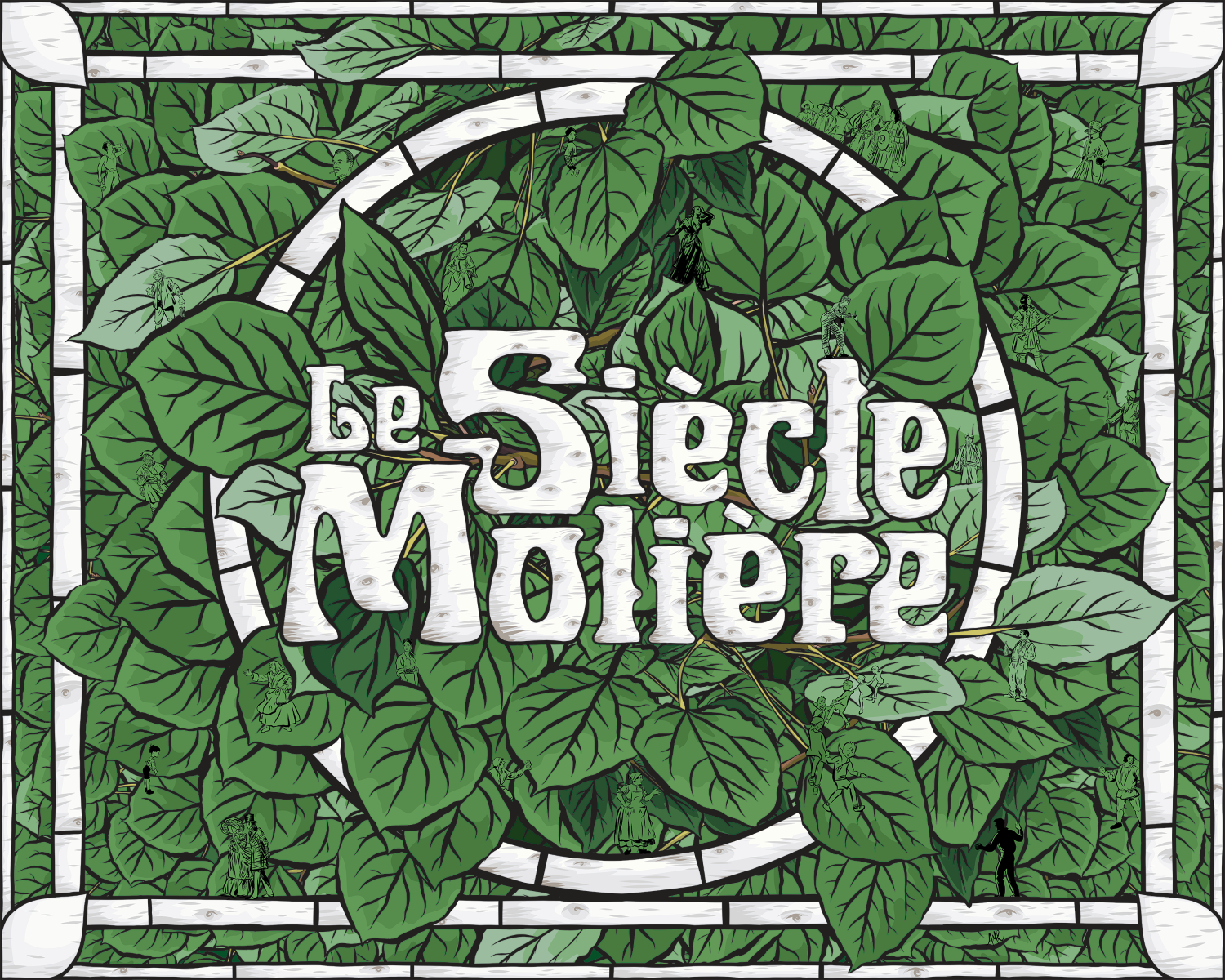
The Molière Century
It is an honour for me to conceptualise the visual identity of this landmark season. Having worked in graphic design for my entire adult life, I have had the opportunity to create hundreds of visuals, mostly for advertising purposes, over the course of my career. For over ten years, I have honed my ability to interpret the needs of various parties and translate their artistic visions onto paper. So where should I start when given carte blanche to use my own style?
I am fascinated by history and the evolution of art as a means of communication, and I am also drawn to nostalgia and richly detailed works. To highlight our centennial, I took inspiration from these ideas so that the images would be the first to speak, holding the viewer's gaze long enough to invite them to discover their meaning.
To tackle this project, I played around with the maximalist approach of Art Nouveau posters. It's a style that invites reinvention – as seen in the psychedelic rock posters of the 1960s. In other words, I drew inspiration from them without trying to recreate “historical” images.
In the hope that each image would be worth a thousand words, I also drew inspiration from the stained-glass windows of churches and great buildings: stained glass speaks without knowing any language. It draws people in with its vivid colours and tells a story through familiar characters and symbols surrounded by lavish decorations.
What does one hundred years look like? I was quick to choose the analogy of a large, old tree. It's not very unique, but I believe clichés can sometimes be powerful. A cliché is imagery that is meant to be accessible, allowing anyone to draw their own conclusions. Branches that grow, break and grow again, roots that sink into the earth where they were sown, leaves that fall to give way to young sprouts... The hundred-year-old tree is a fitting metaphor for the continual evolution that has allowed Théâtre Cercle Molière to claim the title of North America's oldest continuously operating theatre company.
I rekindled my drawing muscles to bring the scenes that appeared in my mind to life. This season's artwork is a tribute to the wealth we have inherited from the last century of theatre and a foretaste of the art that will continue to flourish here over the next hundred years.
Arielle Morier-Roy
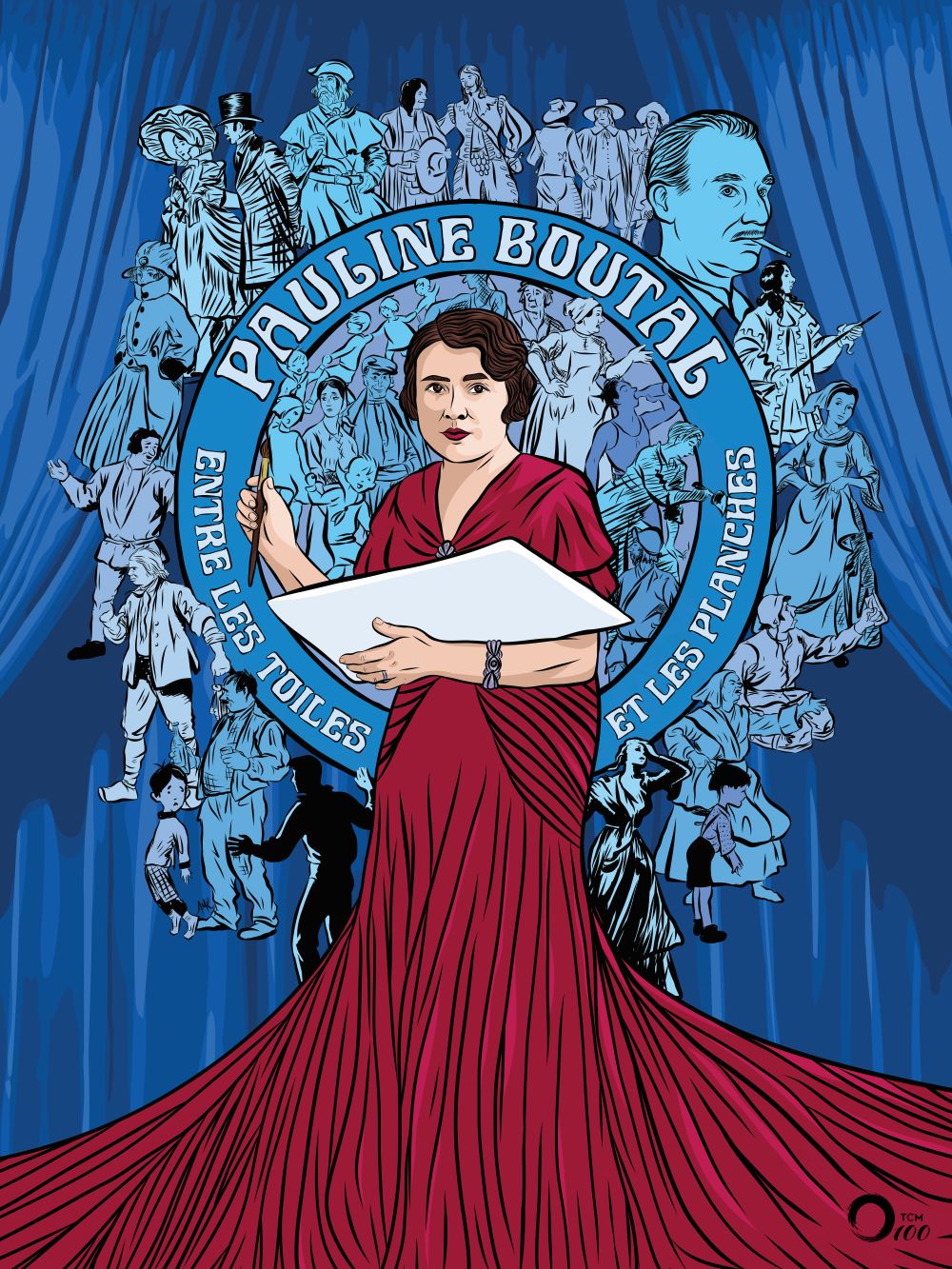
Pauline Boutal, entre les toiles et les planches
As far back as I can remember, Pauline Boutal has always been more of a legend than a woman to me. The place where I fell in love with theatre bore the name of this mythical figure, a pioneer whose historic actions indirectly opened doors that enabled me to explore performing arts. Knowing her only by name, I am fascinated to encounter, through this play, a young Pauline in all her strength: a tenacious, passionate and generous woman.
Pauline's career as an illustrator, presented alongside the key moments of her life, immediately captivated me. Beyond French, drawing was her primary language: thanks to it, costumes, sets and characters came to life. From her sketches to the stage, she performed true feats of magic.
To create a portrait of the great dame, I attempted to capture a fragment of this magic. In it, Pauline is both the subject and the creator: the characters surrounding her are traced from her works – fashion sketches, costume designs for the stage, comic strips and paintings. In some of these caricatures, we recognise familiar faces. Which figures from Pauline's life are hidden behind her anonymous characters?
Elevated in our cultural pantheon, Pauline's portrait is surrounded by a halo, like the central figure in a stained-glass window like the ones her father made. She is surrounded by a community she shaped with her own brush and, as a symbol of our theatre, is dressed in a gown reminiscent of the curtains that fall on the stage. The legacy Pauline leaves us extends beyond le Cercle Molière: it is the community that continues to thrive on this stage and the living stories that her art continues to tell.
Arielle Morier-Roy - Illustrator
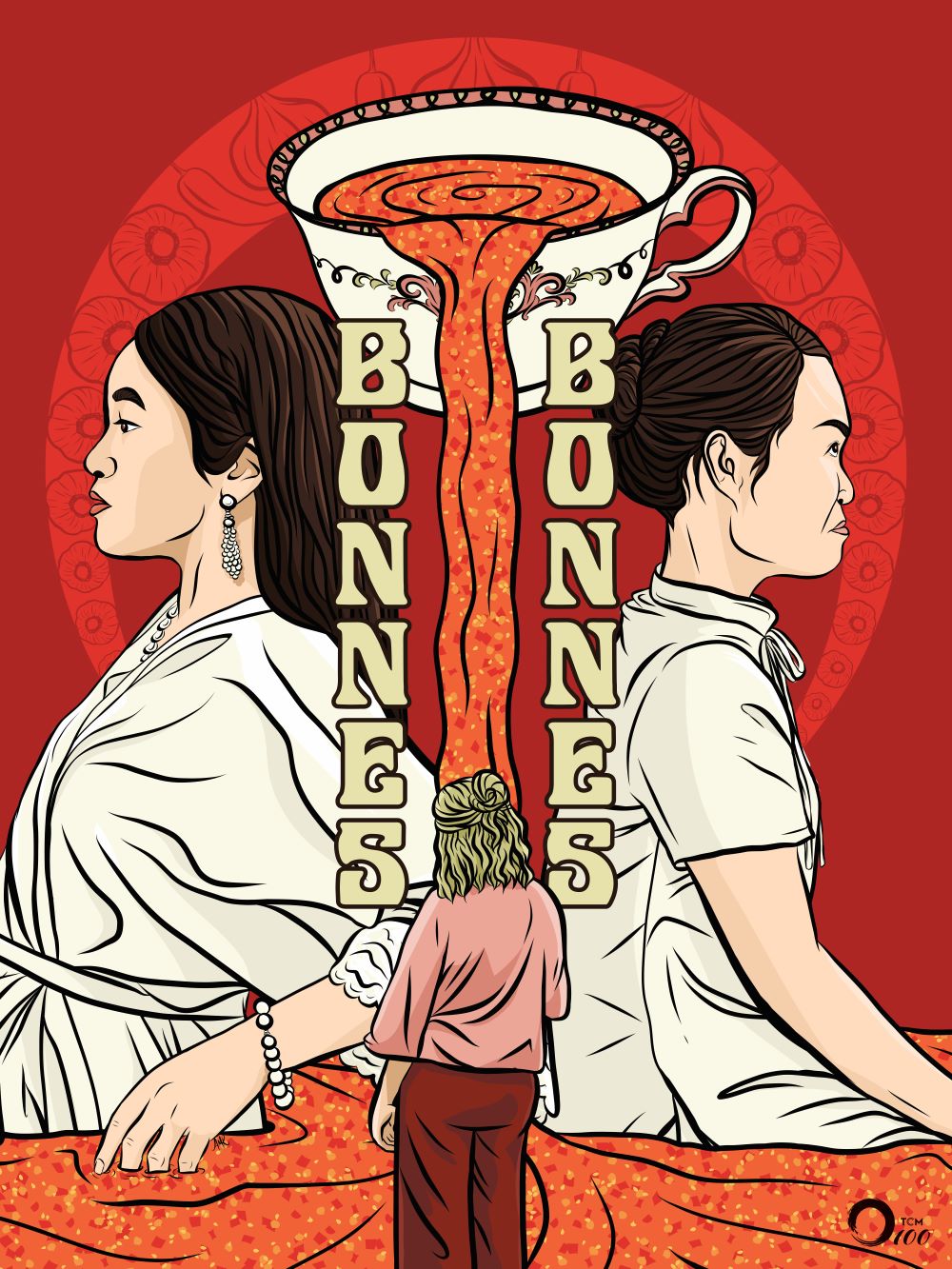
Bonnes Bonnes
Bonnes Bonnes is a rare glimpse into the Chinese-Canadian-French experience on our stage. Guided by the contrasting perspectives of three women, the lines between the dramatic elements of the play become blurred: are they the characters in the story, or its spectators? Are their words honest, or are they a performance for the audience or for themselves? Are we merely the spectators of the play, or do we also have a role in this story?
The inclusion of a French play written in 1947 may seem surprising at first glance, but it serves as a clever dark mirror for Sophie, who is confronted with the complex feelings that her intersectional identity brings her. In Genet's Les Bonnes, two maids express their dissatisfaction with their social class by employing very different coping strategies. Their gaze is directed outwards – they do not see each other, even though they share the stage.
he elements of this show can be interpreted from various perspectives – and the same goes for this illustration. Does the vertical text serve to connect or divide the characters? Does the symmetry of the image highlight their similarities or draw attention to their differences? Is the chilli sauce covering the characters familiar or uncomfortable? Will it stain their clothes or dye them a lucky red? Is Sophie, who is observing the scene, enlightened by it or crushed beneath its weight?
Bonnes Bonnes invites us to examine our identities and the way we play our own roles – perhaps the answer is not to be found on stage, but in what we choose to see there.
Arielle Morier-Roy - Illustrator
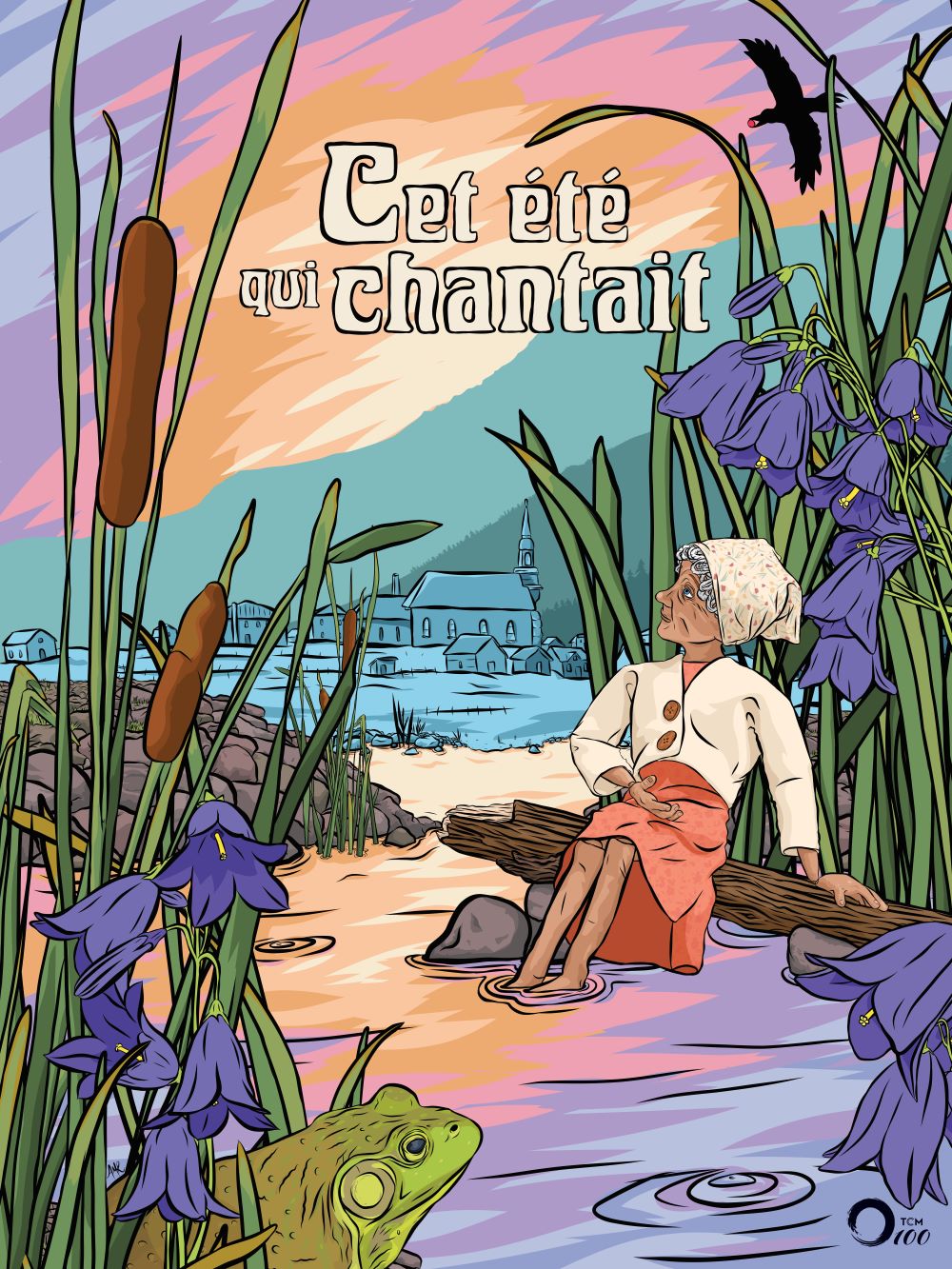
Cet été qui chantait
In the spirit of a nature retreat, the illustration for Cet été qui chantait pays homage to vintage holiday destination posters. It shows Bernadette, serene, contemplating a picturesque landscape, as if immersed in a postcard she might have sent to her dear sister.
How could one possibly do justice to the vivid landscapes Gabrielle Roy paints with her words? She masterfully reveals the beauty of everyday moments, where routine becomes a milestone, where small creatures are our neighbours, and where a mud puddle proves as fascinating as a vast forest.
In the distance, you can see the structures of the village of Petite-Rivière-Saint-François, the mountains, and a horizon so vast that the details dissolve into it. In the foreground, the flora is both familiar and surprising: from the perspective of a small papier-mâché person, a cattail or a flower is as big as a tree.
The troupe of Cet été qui chantait has made the clever choice to combine puppets with stage acting, tiny landscapes with full-scale sets, and physical spaces with imagined landscapes to create a vibrant and evocative panorama, both micro and macro. In the small black box of the theatre, feelings that are rarely found far from nature emerge: a sense of peace, slowness, and beauty.
Arielle Morier-Roy - Illustrator

Ô Canada, té qui toi?
My main challenge in composing this illustration resonated with that of the characters: how can one assert one's identity when being the product of a multitude of cultural influences?
In the background, African fabric patterns blend with snowflakes inspired by Métis beadwork to create a winter sky that is both icy and warm. However, the rural landscape in which this piece takes place is not the real star of the show.
This spotlight is given to Louis, Jen and Amina, who take centre stage, accompanied by the griot Ousmane who is driving the bus. These characters stand out from the landscape they overlook by displaying their own colours and not hesitating to exceed the boundaries within which they have been placed. Like the sun on the plains, they light up the horizon (and above all, our stage) with their infectious joie de vivre.
Arielle Morier-Roy - Illustrator
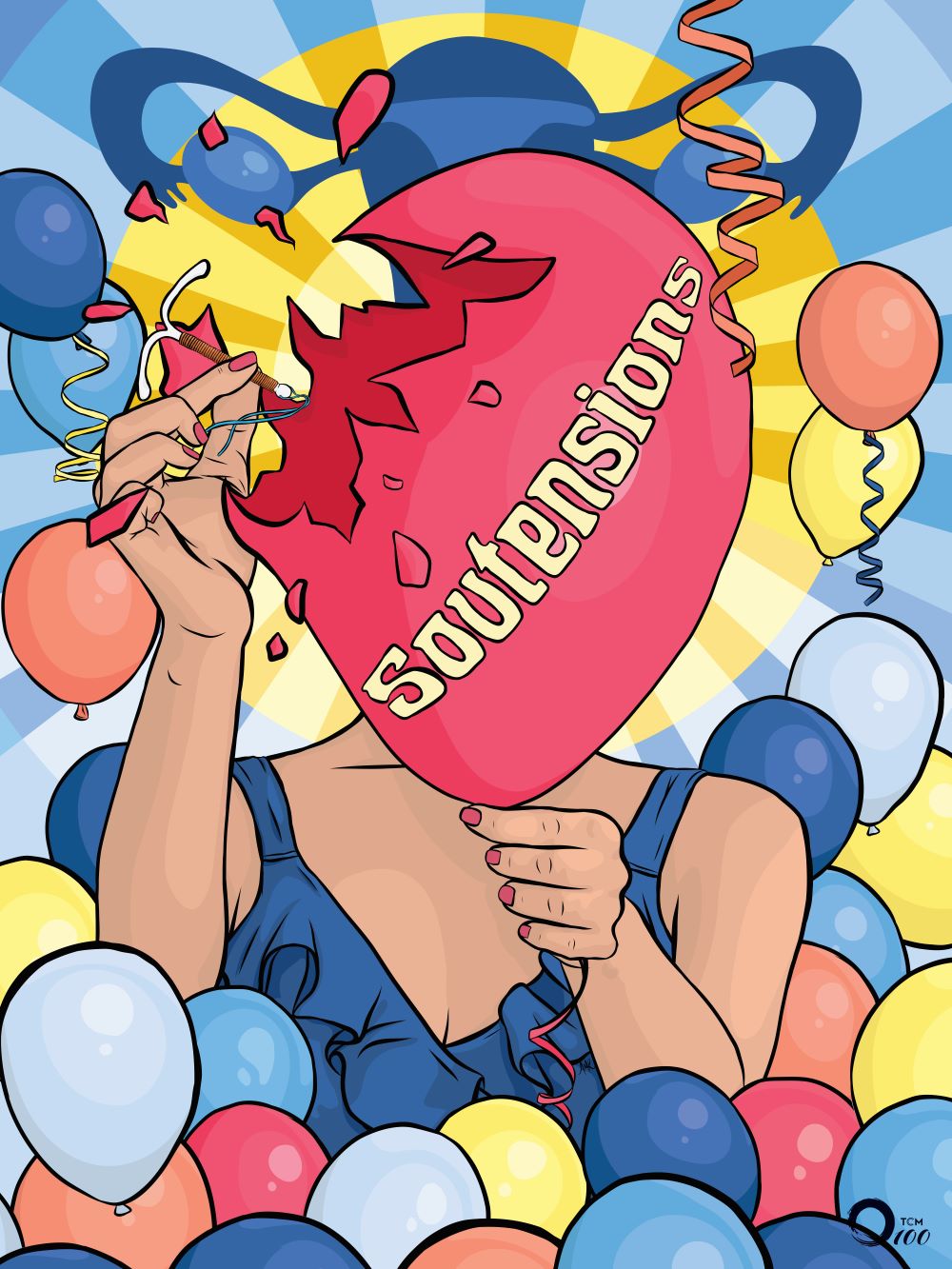
Soutensions
The pressure that Brandi feels to meet her mother's and society's expectations stretches her patience to the breaking point. Pushed beyond her limits, Brandi’s bubble bursts under the strain.
Isn't it time to reinvent our portrait of what a woman should be? In thinking about Brandi's frustrations, the image of a stained-glass window depicting the Virgin Mary immediately came to mind. An idealized model of womanhood — chaste, maternal, with a preordained destiny — Brandi rejects these notions without remorse and with a sense of humour.T
his illustration is meant to be a contemporary stained-glass portrait celebrating all the womxn who take charge of their destiny and assert their choices, despite the shockwaves that come with bursting the balloon of social conventions.
Arielle Morier-Roy - Illustrator
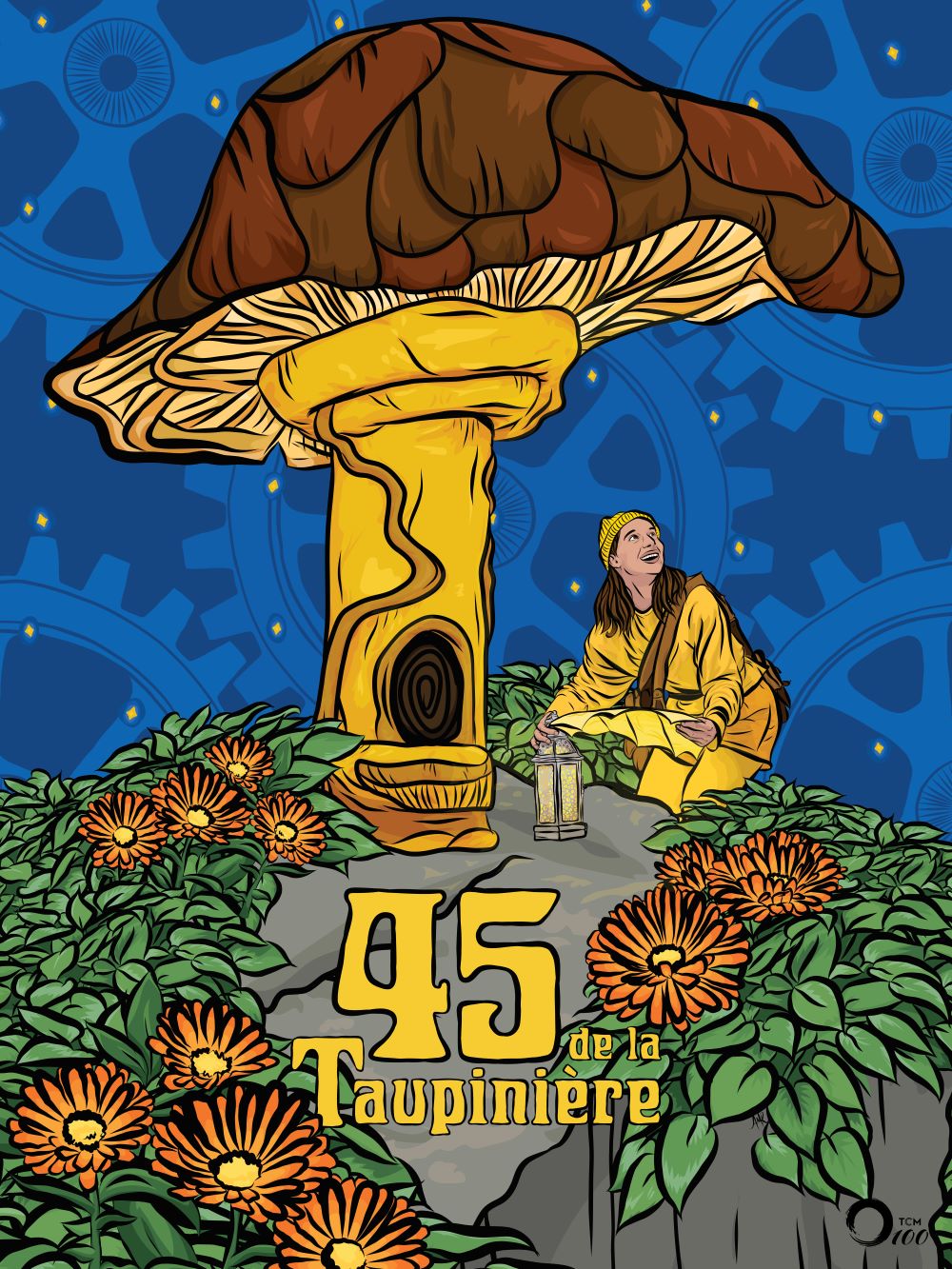
45, de la Taupinière
When we first see a play, we suddenly grasp that anything is possible at the theatre. In that moment of discovery, magic becomes reality. In this illustration, I wanted to capture the wonder of those first theatrical experiences, when we allow ourselves to be transported to another world for the very first time.
Under a mushroom — sorry, a “champiroc” — Margot explores this fairytale setting, following her grandfather’s map. Marigolds grow on the rock, while the starry sky comes alive with a mysterious mechanism.
45, de la Taupinière is a show that delights and enchants. It invites us, among the lights that pierce the darkness, to discover the wonder of another world, hidden right under our noses.
Arielle Morier-Roy - Illustrator

Arielle Morier-Roy
Arielle is a Queer, nerdy, crafty, and multiskilled graphic artist.
A Winnipegger hailing from Sainte-Anne, Manitoba, she cultivates her passions for art and theatre, as well as her interest in sociology, in both her public projects and in her personal life.
You may have already seen her stylised version of the Franco-Manitoban flag on SFM T-shirts, her graphic artwork on posters advertising CJP projects, or her brushstrokes on the mural in her mother's garden. You may also have seen her on stage as part of the Chiens des Soleil or B.S. Comedy troupes, and more recently refereeing a game of la Ligue d ’improvisation du Manitoba or improvising a character in a game of Dungeons and Dragons.
Arielle joined the team at Théâtre Cercle Molière nine years ago and currently works there as a graphic designer. In addition to producing visuals for its 2018-2019 and 2022-2023 seasons, she has created art for countless events along the way. She is deeply grateful to have been entrusted with the opportunity to create the visual identity for the Molière Century.